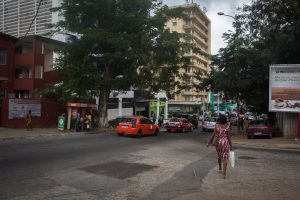By Laurent Bossard, Director, The Sahel and West Africa Club/OECD
21 June 2022

Geography describes the natural and social dynamics of a territory; it accounts for the phenomena observed through cartography. By situating facts spatially, it seeks to answer the questions “What?”, “Where?”, and – if possible – “How long ago? This information then leads to other important questions such as “How? and “Why? These in turn lead to the final question “What to do?
The question “where” is essential because it highlights the diversity of territories. The same phenomenon may have neither the same causes nor the same effects depending on the natural configuration and settlement of the territory in which it occurs. In some cases, the causes and effects may be radically different. It is essential to take this diversity into account when addressing the “what to do” question, i.e. when defining and implementing public policies.
The notion of scale is just as important as that of diversity. A phenomenon can be observed on a small area (large scale) or on a much larger area (small scale). The small scale allows us to understand global dynamics and to define structural, national, regional or global policies. The large scale reveals the nuances of the diversity mentioned above; it allows for the implementation of strategies adapted to local realities.
For several decades, the Secretariat of the Sahel and West Africa Club of the OECD has promoted a multi-scalar and geographic approach to action in Africa. Understanding territories is useful and necessary everywhere in the world. It is a little more so in Africa at this time in history.
Africa is the last continent not to have completed its demographic transition. Its population will double again in the next three decades, while everywhere else the number of inhabitants is increasing slightly, stabilising or decreasing. As was the case at other times on other continents, population growth is causing a radical change in settlement patterns, resulting in particular in rapid urbanisation. It also brings about profound social, economic and political changes, sometimes leading to crises and ruptures.
Managing the demographic transition is in itself an immense challenge. The other continents did so – in different ways – between the beginning of the 19th century and the middle of the 20th century. It has therefore been the African continent’s turn since the 1950s. But, the global environment in which this transition is taking place has changed. Africa must deal with climate change, which was not the case for other continents. It must also manage its population without resorting to mass emigration or the conquest of territory as Europe did. Finally, it must “do more and do it faster” because its population growth is the fastest and strongest in human history.
In other words: Africa is changing fast, it is not changing in the same way in all its territories and at all scales.
These changes are subject to structural changes across the continent and to global influences. On this common substratum, local realities are as diverse as they are numerous.
This is why African policy makers and their partners need to have access to the right maps. Maps describing the importance of Africa in the world, Africa and its regions, countries, localities, cross-border areas; maps of potentials and productions, crises and threats, maps at all scales, maps that are consistently updated because changes are constant.
It is in this spirit that SWAC created a new project, Mapping Territorial Transformations in Africa (MAPTA).

